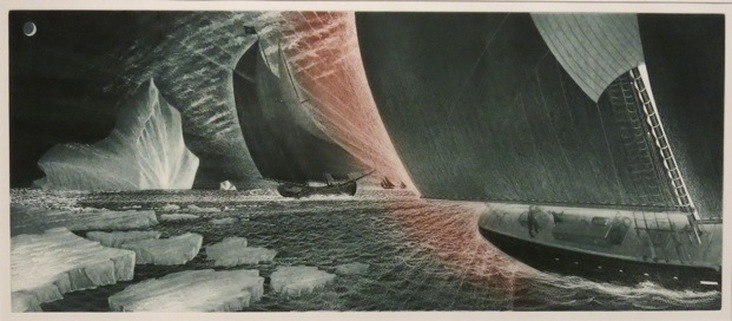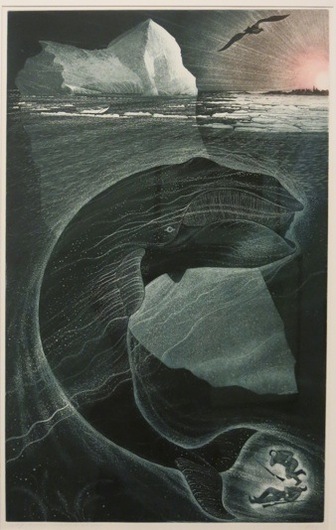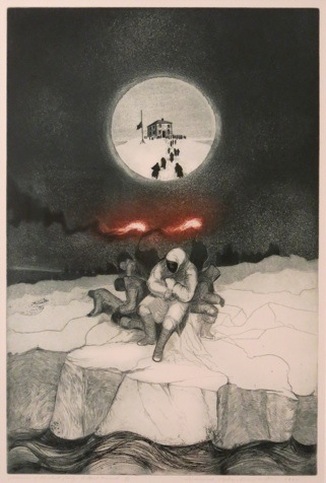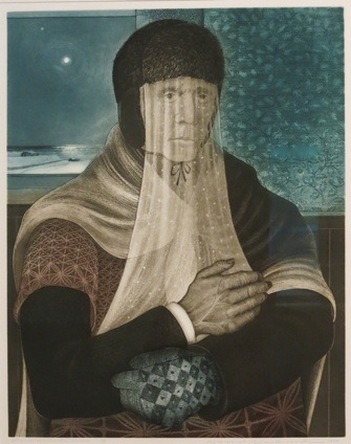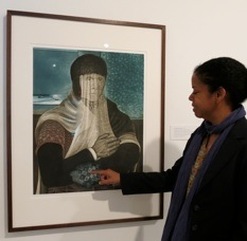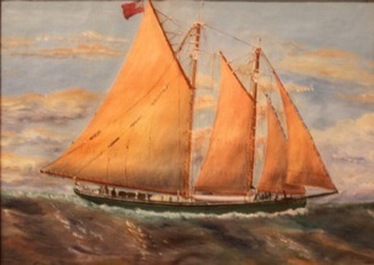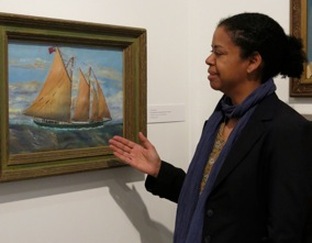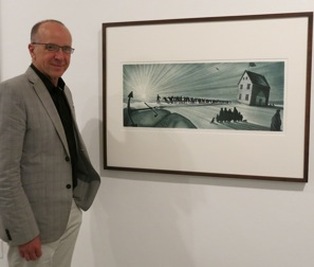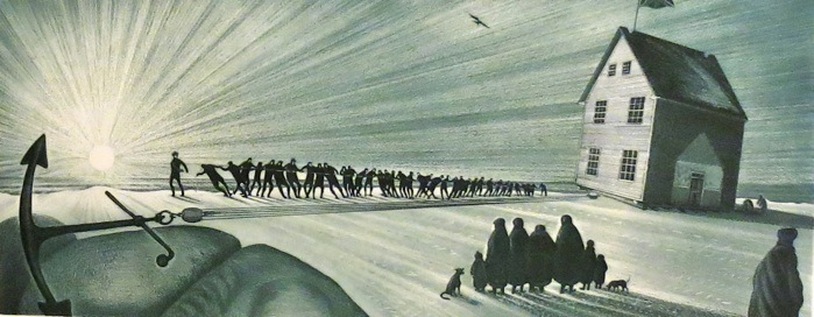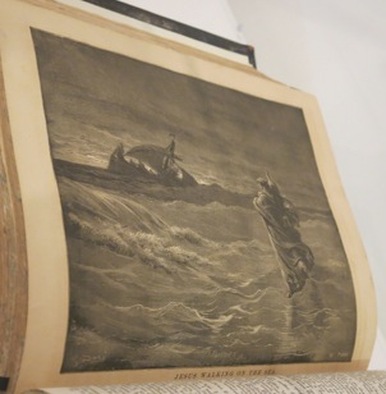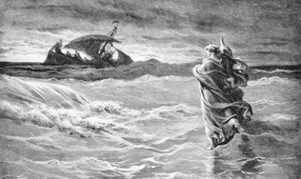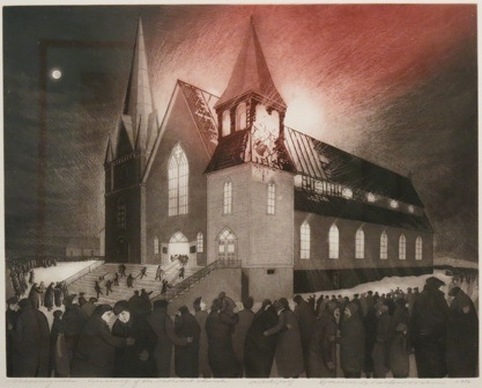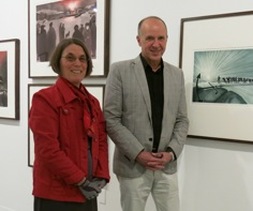DAVID BLACKWOOD
Black Ice: Prints from Newfoundland at the Art Gallery of Greater Victoria
May 4 - Sept 8, 2013
This impressive collection of prints includes archival material and historical artifacts as well as information about Blackwood’s working methods.
Organized by the Art Gallery of Ontario and curated by Katharine Lochman, the exhibition traveled to Newfoundland after its Toronto premiere in 2011.
David Blackwood was born in Wesleyville, Newfoundland in 1941, into a nautical family of ship builders and sea captains. During his upbringing in the isolated fishing community, he witnessed a disappearing way of life. For generations, the sea-faring people gathered cod, seals and seabirds from the tempestuous Atlantic. These bountiful harvests arrived on icy currents of fecund sea water. “Icebergs still drifted by Wesleyville in July,” recalls David, “if one became mired off-shore in Bonavista Bay, the micro-climate of the village chilled.” (*Artist quotes are from a public lecture delivered May 4, 2013) |
|
Navigation of coastal waters with schooners and row boats was fraught with perils. Fuelled by vivid memories of people and events, and illuminated with imaginative power, Blackwood’s prints mesmerize the viewer with narrative content. The stories of everyday life in Wesleyville are extraordinary tales wherein light and darkness collide and coalesce. We witness the fragility of human life, pitted against forces of nature and the inevitable passage of time. Terror lurks in the unknown depths - but hope glimmers in the surreal beauty of white ice on black water. |
|
Blackwood presented archival photos of Wesleyville that included the Methodist Church. “The Methodists were practical and encouraged education and community service,” he says.
The village had no fire department, so events like the burning of the church were local tragedies, witnessed by all. The Art Gallery of Greater Victoria is located at 1040 Moss Street. Phone: 250 384-4171 www.aggv.ca Tours and programming for Black Ice: are ongoing. Please check website for details. |
|
Web Design, Content & Photos:
Kate Cino previewed arts events for 18 years at Boulevard magazine. She has a History in Art degree & Public Relations certificate from the University of Victoria. For ten years, she operated an art & framing shop. kate-cino@shaw.ca 250 598-4009 |
